This is the article to explain the implementation of USB Audio Device in the USB module of the LPC1768. For setting up the Environment for the development of ARM cortex M3 is well discussed in this article.
The LPC 1768 is ARM Cortex- M3 based Microcontrollers for embedded application features in low power consumption and a high level of integration. The ARM Cortex M3 is designed in a such way to enhance debug features and a higher level of system integration. It clocks at a CPU frequency of 100 MHz, and incorporates a 3-stage pipeline and uses a Harvard architecture with separate local instruction and data buses for third bus peripherals. The ARM Cortex- M3 CPU have an internal pre-fetch unit to support speculative branching. The peripheral components include 512KB of flash memory, 64kb of data memory, Ethernet MAC, USB OTG, 4 UART’s, 8-channel general purpose DMA controller, 2 SSP Controllers, 10-bit DAC, Quadrature encoder interface, SPI interface, 3 I2C bus interface, 2 input plus 2 outputs I2S bus interface, 4 general purpose timers, ultra-low power Real-Time Clock (RTC) with separate battery supply, and up to 70 general purpose I/O pins, 6-output general purpose PWM. The LPC1768/66/65/64 is pin-compatible with the 100-pin LPC236x ARM7-based Microcontroller series.
This USB example project implements a USB Audio device that connects via the USB interface to the PC. This does not require any special USB driver, since the support is already built into Windows or Linux. This USBAudio example program enables the LPC1768 board to act as a sound card on a PC.
The volume can be adjusted by the Potentiometer connected to the LPC1768. For more details refer this article.
ADC Programming in LPC1768.
The Audio output pin is connected through Audio amplifier to the speakers. IC PAM8403 is used as the amplifier here. The below circuit gives the connection of Audio amplifier.
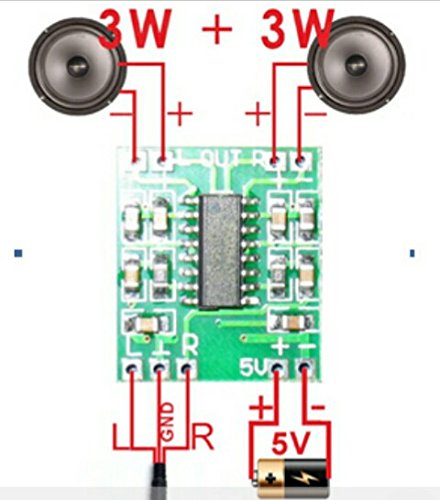
Fig. 1: Circuit Diagram of Audio Amplifier with LPC1768
USB:
Universal serial Bus (USB), a connection technology for attaching peripheral devices to a computer, providing fast data exchange. USB connects more than computers and peripherals. USB gives you a single, standardized, easy-to-use way to connect up to 127 devices to a computer.
Interfacing USB:
Below figure shows how to interface the USB to microcontroller. The USB is a 4 wire bus that supports communication between a host and a number (127 max.) of peripherals. In USB data cable Data+ and Data- signals are transmitted on a twisted pair. No termination needed. Half-duplex differential signaling helps to combat the effects of electromagnetic noise on longer lines. Contrary to popular belief, D+ and D- operate together; they are not separate simplex connections.
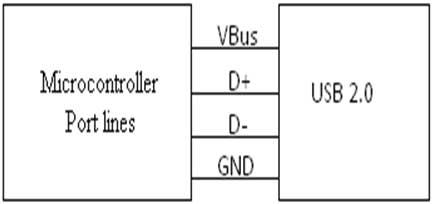
Fig. 2: Block Diagram Of USB Interfacing Microcontroller
Interfacing USB with LPC2148:
The LPC1768 controller enables 12 Mb/s data exchange with a USB host controller. It consists of register interface, serial interface engine, endpoint buffer memory and DMA controller. The input, output signals and a USB Bus are used to connect with controller. The LPC2148 controller read the USB voltage as power supply for controlling peripherals without having an external voltage. The LPC1768 USB takes supply voltage either from USB or external power supply by using a Jumper connection.
Circuit Diagram to Interface USB 2.0 with LPC1768:
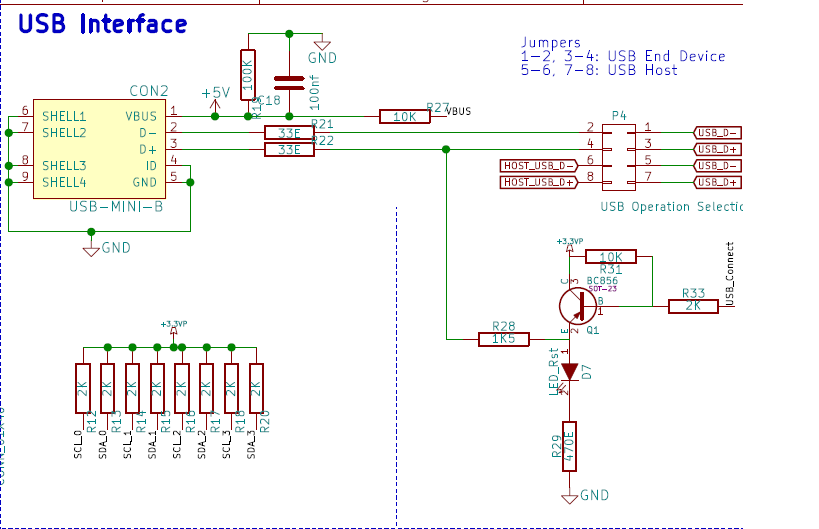
Fig. 3: Circuit Diagram To Interface USB 2.0 With LPC1768
Create a project using Keil uvision4 for LPC1768 Microcontroller:
In this section, we will start creating a project in Keil MDK we have already installed Keil µVision and Co-MDK Plug-in + CoLinkEx Drivers required for the CoLinkEx programming adapter. You can start by downloading the project files and kick start your practical experiment.
To build this example, first download and extract the quick start code base.
After downloading, upload the program to the LPC1768 Board, follow these steps to run the program.
Installing the USBAudio Device:
-
Disconnect the USB power cable from the board.
-
Wait 10 seconds.
-
Re-connect the USB power cable to the board.
The Windows operating system displays a “Found New Hardware” message, but you don’t have to load any special drivers. Because support is built into Windows or Linux, The USB Audio device does not require a special driver.
-
Review the status of the USB Controllers using the Device Manager.
-
Right click on My Computer to open the System Properties – Hardware dialog.
-
Then click on Device Manager.
-
Right-click on the USB Audio Device to open the Properties dialog which contains the description and status of the device.
Running the USBAudio:
After verifyig the installation of the Audio device, use the LPC1768 to output any sound source in Windows (like the Windows Media Player, Youtube, etc).
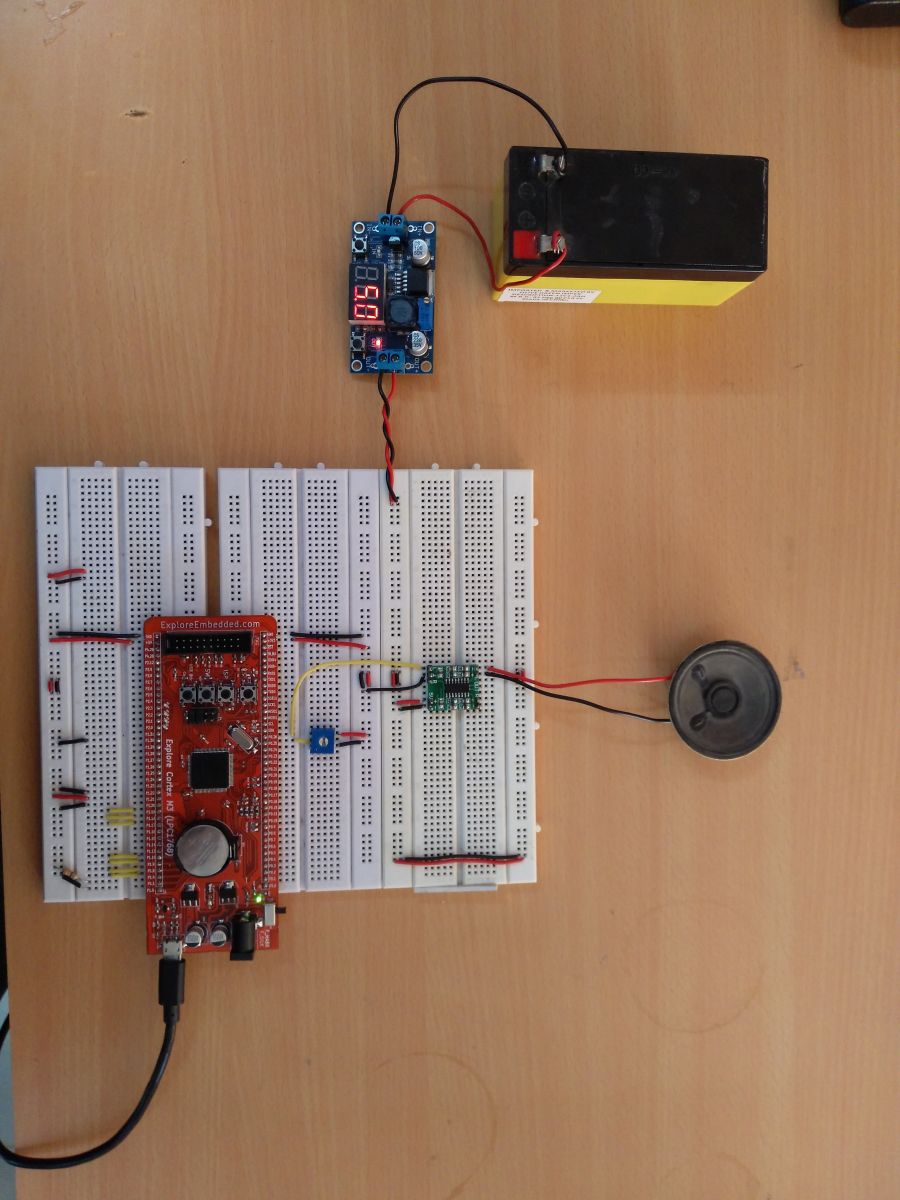
Fig. 4: USB Audio Using LPC1768 Prototype
Project Source Code
###The codes are linked in Description ###
Circuit Diagrams
Project Components
Project Video
Filed Under: ARM.
Filed Under: ARM.

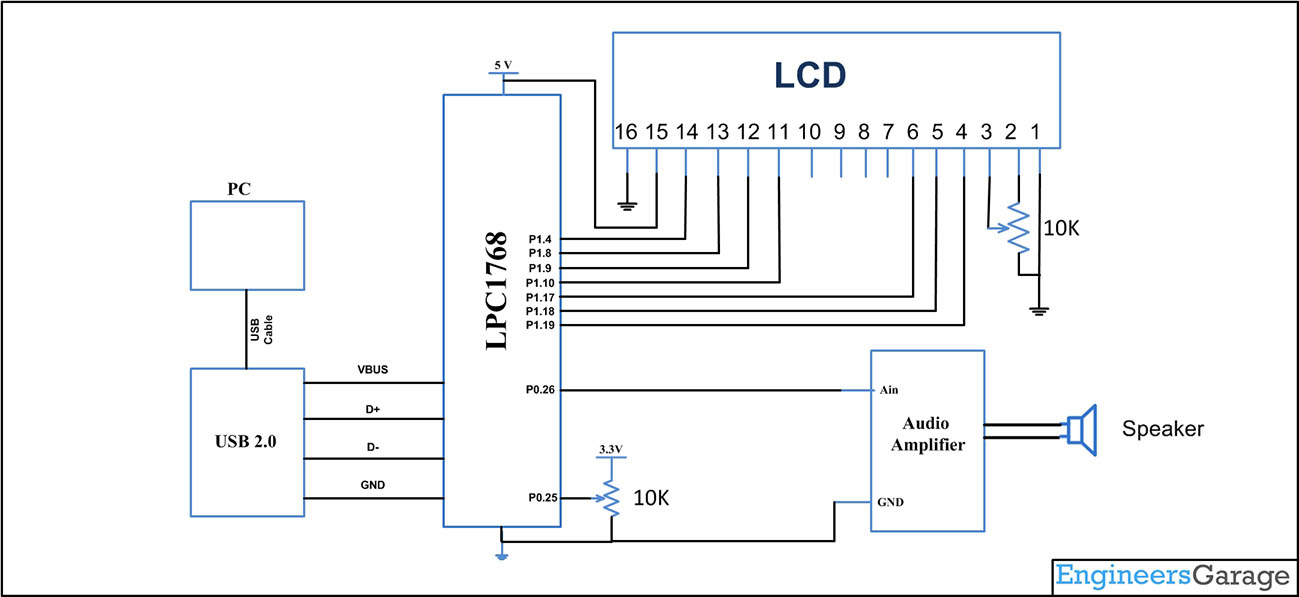

Questions related to this article?
👉Ask and discuss on Electro-Tech-Online.com and EDAboard.com forums.
Tell Us What You Think!!
You must be logged in to post a comment.